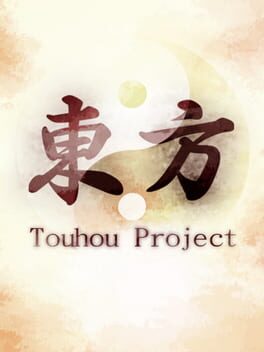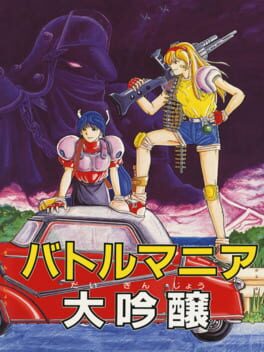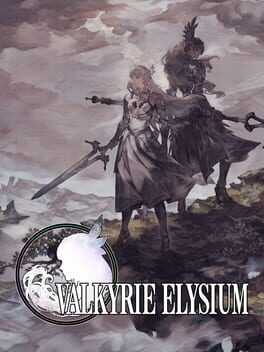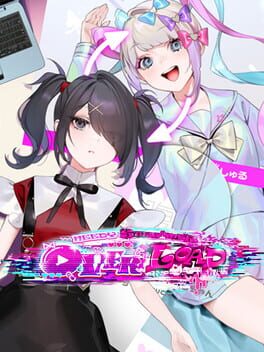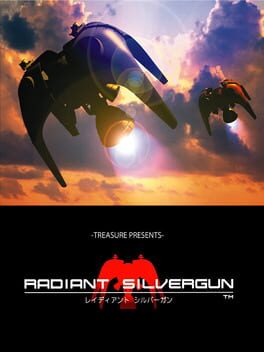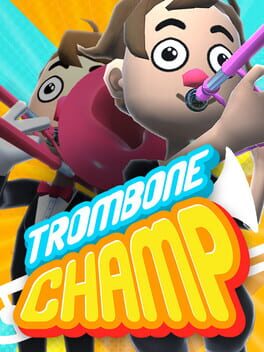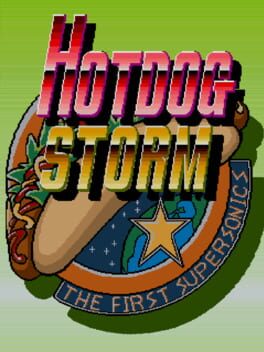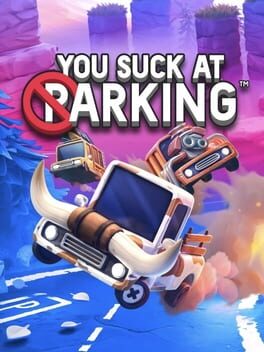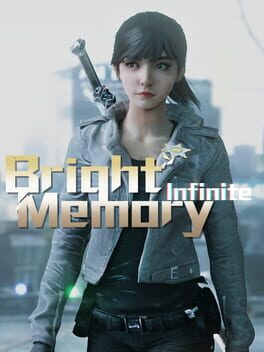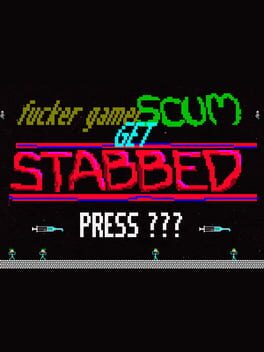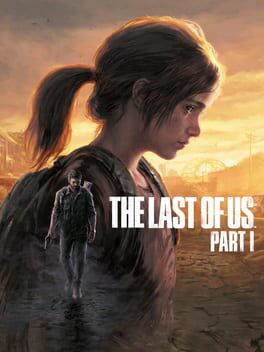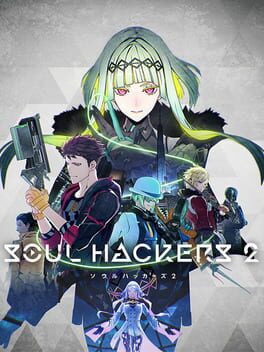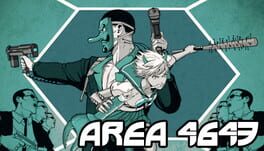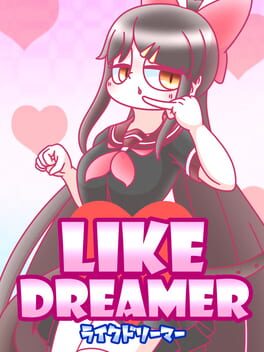Cold_Comfort
TBD
Incredible presentation brushes against great music, fantastic technical use of the mega drive hardware, and solid enough gameplay to make for what would be an extremely compelling and well-aged shooting game if it weren't for being stupidly long and have interminable pacing.
I would of course, be talking about Musha Aleste. And Thunder force IV. or Gleylancer. or Zero Wing MD. And Gynoug, or, sadly - Battle Mania Daiginjou.
It is probably the most annoying trend in the STG genre. You cut out the dead air, tanky boss health bars and endless, boring waves of zako that make up 50% of the game and you've got a great STG here - and in every other game i've mentioned.
BMD does sidestep the problem a little bit thanks to the levels themselves being fairly varied, with a combination of vertical and horizontal scrolling stages, and some pretty cool environments. The adorable story-cut ins between each stage also give nice breaks. But on the other hand, the general shooting is super simplistic and below par, and it's ridiculously easy on it's default settings by STG standards (I blind cleared it without a sweat.
Even if you ignore the lightning fast STGs of the arcade of it's era (Batsugun and Thunder dragon 2 released the very same year), BMD and its ilk are still simply outmatched by the console STGs of it's era that just decided to not waste your time, regardless of technical competency. Slap Fight MD eats their lunch, and - weird as it is - biohazard battle shows how this breed could have been so much better with respect for the player's time.
Its still easy to appreciate the art and the sheer joyfullness of it. It's got some of the best sprite art on the MD, and is absolutely worth a lone playthrough. But I sadly can't reccomend it any more than that.
I would of course, be talking about Musha Aleste. And Thunder force IV. or Gleylancer. or Zero Wing MD. And Gynoug, or, sadly - Battle Mania Daiginjou.
It is probably the most annoying trend in the STG genre. You cut out the dead air, tanky boss health bars and endless, boring waves of zako that make up 50% of the game and you've got a great STG here - and in every other game i've mentioned.
BMD does sidestep the problem a little bit thanks to the levels themselves being fairly varied, with a combination of vertical and horizontal scrolling stages, and some pretty cool environments. The adorable story-cut ins between each stage also give nice breaks. But on the other hand, the general shooting is super simplistic and below par, and it's ridiculously easy on it's default settings by STG standards (I blind cleared it without a sweat.
Even if you ignore the lightning fast STGs of the arcade of it's era (Batsugun and Thunder dragon 2 released the very same year), BMD and its ilk are still simply outmatched by the console STGs of it's era that just decided to not waste your time, regardless of technical competency. Slap Fight MD eats their lunch, and - weird as it is - biohazard battle shows how this breed could have been so much better with respect for the player's time.
Its still easy to appreciate the art and the sheer joyfullness of it. It's got some of the best sprite art on the MD, and is absolutely worth a lone playthrough. But I sadly can't reccomend it any more than that.
2022
Valkyrie Elysium has one of the absolute finest combat systems i've seen in a game in a long time. A beautiful insection between the systems of Platinum and Kingdom Hearts, with bountiful options and ways to extend attack chains into this beautifully flowing thing. The sort of thing where you see a new group of enemies in the distance and think "let's go" even if it's the same bunch of mobs you've seen many times before.
It is such a bright, shining centerpiece for the game. Probably the best action game combat in a decade. All the game needs on top of it to be honestly a straight up game of the year is competent mission design, a decent story, and fair production values.
Well, shit.
Just about everything but the combat and visuals in Elysium is a notch below mediocre, and it threatens to ruin the whole damn thing. In so many ways it feels like it's a mid-budget game plucked straight from 2002, where action games like this were yet to work out things like quest design, level design, enemy variety, story structure, pacing, RPG elements...
I hate to say it but just going about the levels in Elysium is misery. The balance between linearity and open levels is as bad as it could possibly be, where it may as well have been liner with how corridor-y it is, but also offers just enough alcoves and off routes to both get lost and to hide trinkets down to waste your time. There's also bafflingly bad detective/tracking sections which require you to follow the slowest butterflies to a location, which you'll have to resummon, which yes has a 7 second unskippable animation, what the fuck? Oh, and you'll need to do some truly painful searching around the maps to find the mcguffins to achieve the true ending.
Well that is, if you care. The story isn't bad so much as barely anything happens, and your objectives for the first 80% of the game are unclear, and the game fails to really bring up consequences and honestly, what the core conflict even really is until really late on. Granted, you can kind of see it all coming anyway. There is some neat twists on norse mythology and stuff buried in here somewhere, and the true ending actually goes hard, but yeah. Not worthwhile.
Also for a war between gods which literally is about the fate of the world, the production is so barebones. There's no sense of scale at basically any point, the cast is tiny (there is legitimately one living human shown) - it's hard to articulate, but the drama it's going for just doesn't really pay off.
But fuck it, it's worth it. The combat is that good. The smorgasboard of dealbreakers just drift away when you're knee deep in some ridiculous aerial combo where you summon 2 dudes, ending with a spell that sets you up for another into a perfect parry launcher-thing.
It's just clear the budget was just not there for basically anything else.
It is such a bright, shining centerpiece for the game. Probably the best action game combat in a decade. All the game needs on top of it to be honestly a straight up game of the year is competent mission design, a decent story, and fair production values.
Well, shit.
Just about everything but the combat and visuals in Elysium is a notch below mediocre, and it threatens to ruin the whole damn thing. In so many ways it feels like it's a mid-budget game plucked straight from 2002, where action games like this were yet to work out things like quest design, level design, enemy variety, story structure, pacing, RPG elements...
I hate to say it but just going about the levels in Elysium is misery. The balance between linearity and open levels is as bad as it could possibly be, where it may as well have been liner with how corridor-y it is, but also offers just enough alcoves and off routes to both get lost and to hide trinkets down to waste your time. There's also bafflingly bad detective/tracking sections which require you to follow the slowest butterflies to a location, which you'll have to resummon, which yes has a 7 second unskippable animation, what the fuck? Oh, and you'll need to do some truly painful searching around the maps to find the mcguffins to achieve the true ending.
Well that is, if you care. The story isn't bad so much as barely anything happens, and your objectives for the first 80% of the game are unclear, and the game fails to really bring up consequences and honestly, what the core conflict even really is until really late on. Granted, you can kind of see it all coming anyway. There is some neat twists on norse mythology and stuff buried in here somewhere, and the true ending actually goes hard, but yeah. Not worthwhile.
Also for a war between gods which literally is about the fate of the world, the production is so barebones. There's no sense of scale at basically any point, the cast is tiny (there is legitimately one living human shown) - it's hard to articulate, but the drama it's going for just doesn't really pay off.
But fuck it, it's worth it. The combat is that good. The smorgasboard of dealbreakers just drift away when you're knee deep in some ridiculous aerial combo where you summon 2 dudes, ending with a spell that sets you up for another into a perfect parry launcher-thing.
It's just clear the budget was just not there for basically anything else.
Aside from a shit weapon selection, legitimatey the best kart racer out there.
A modding scene so powerful it could only be down to the sonic community is a lot of that - turns out blasting past your friends as Mido from zeroranger, blasting the "o-ok lets go" sample from Third Strike on a fucking Collums 3 inspired map is way more fun than anything mariokart has ever been able to manage.
But maybe the key to SRB2K is how just smooth it all is. A lot of games who's power relies on Mods are such an absolute pain in the arse. In SRB2k you just put the files anywhere in the folder, and if you dont have them it will download them like a TF2 map when entering a room. And those multiplayer rooms are so malleble and allow options like just straight up pausing the whole thing.
When i first heard about SRB2K i thought "damn this is going to be frustrating", but the user experience is just wonderful, really. And thats such a great thing for any "mod platform" game to have.
The only really contentious thing i'd say is the handling, which I like as it leans way more towards super mario kart than mario kart wii onwards, and makes it easier to appreciate the more technical track designs as even basic tracks are quite hard to drive. Compared to modern mario kart which is so easy to drive its a joy, and its nice to actually have to think whether to drift or not in a kart racer again.
Very, very few complaints. Remarkable fan project and probably the best sonic game.
A modding scene so powerful it could only be down to the sonic community is a lot of that - turns out blasting past your friends as Mido from zeroranger, blasting the "o-ok lets go" sample from Third Strike on a fucking Collums 3 inspired map is way more fun than anything mariokart has ever been able to manage.
But maybe the key to SRB2K is how just smooth it all is. A lot of games who's power relies on Mods are such an absolute pain in the arse. In SRB2k you just put the files anywhere in the folder, and if you dont have them it will download them like a TF2 map when entering a room. And those multiplayer rooms are so malleble and allow options like just straight up pausing the whole thing.
When i first heard about SRB2K i thought "damn this is going to be frustrating", but the user experience is just wonderful, really. And thats such a great thing for any "mod platform" game to have.
The only really contentious thing i'd say is the handling, which I like as it leans way more towards super mario kart than mario kart wii onwards, and makes it easier to appreciate the more technical track designs as even basic tracks are quite hard to drive. Compared to modern mario kart which is so easy to drive its a joy, and its nice to actually have to think whether to drift or not in a kart racer again.
Very, very few complaints. Remarkable fan project and probably the best sonic game.
CW: Self harm, drug abuse, emotional abuse, honestly, you name it.
It has been a long time since i've played a game that has made me as uncomfortable as Needy Streamer Overload. It is grimy, blunt, and very arguably lands on the side of "in poor taste", like i've taken the wrong turn on DLsite and have found myself in the Rance section. All the while it presents events of clear distress and horror with this beautiful, bouncy, art style. And whilst "It's cute but actually a horrow game :O" is old hat by this point, the sheer glee with which NSO depicts what is essentially a torturous month of a woman's life is such a great horror hook.
If you force yourself out of the game's headspace, probably either later in your first playthrough or in subsequent ones, it's easy to see the deliberacy and commentary it's going for, but when I was sucked into it, it really got under my skin to the point that on my first attempt at playing i just had to shut it off after about half an hour.
And the game does a great build up of it's horror as well. Whilst the scenario clearly starts in a fucked up position, it near-inevitably gets much worse and throws a good handful of sucker punches your way, with a very cleverly balanced mixture of triggers based on days and values, and RNG-driven events. Stuff like the game throwing a straight up self-harm minigame at you is sickening, and a lot of the endings have odd triggers and come before the end of the 30 days of gameplay, which adds a very creepy spontaneity to it.
The writing and localisation is also surprisingly very good. Ame is essentially the game's lone character and if the presentation of her was off it would tank the whole thing, and it easily could have ended that way - but there's a great bluntness and relatability to what she says that makes her both someone you want to root for as well as truly nailing the "too online" side, for lack of a better term. It's a simple, obvious trick but the juxtoposition of her alter-ego k-angel and then her private account posting tweets after each other always works, and there's a cutting "realness" to all her DMs, etc.
Probably the most contentious thing of NSO is how unfiltered it is. It goes around slashing at a good pile of raw nerves with a machete - especially in a number of the ending sequences - and i think it's very reasonable to think this is crossing some lines. When things are being presented so matter-of-factly, in that same bouncy, eerily beautiful presenation, i wouldnt blame people for thinking it in bad taste or being shock-value/exploitative.
But the blunt presentation of the topics at play here really works for me. It see it as coming from a place of real anger - about abusive controllilng relationships, about youtube's policies encourange creators wringing themselves dry, relationships between creator and fan. On those repeated playthroughs where the horror inevitably fades, the commentary and grimness really takes up the slack. This incarnation of a fucked up relationship, a girl who's dissociated from a world that revels in her downfall. There's more twists down the tracks and down the 24 endings, but the core is what really resonantes. In particular, I really like how the game feels casts a shadow on to an extent, the whole raising game genre. I doubt this is untrodden ground, but looking at something like princess maker, and how much you control someone's life in that, feels almost tainted after.
Getting int those 24 endings is probably the game's only real problem in my opinion. They're very fiddly, a number of them basically demand a guide and doing multiple repeat playthroughs right to plan in these sort of things saps the game of it's spontaneity. It also just takes too long. Yes, the entire game can be beaten in about an hour, probably far shorter on repeats, but it still ends up way too much, and some are even tied to 1/100 random events proccing. I don't blame anyone for getting a handful of endings then watching the rest on youtube, which is probably not ideal.
The game's "main" ending, though, Internet Overdose, is just... horrifying. The game's true coup de grace and a fantastic way to go out. Its the apotheosis of what NSO - incrediblly presented and being confrontational with it's themes in a way thats hard to watch.
So if you can stomach it, and also go into it with some faith that's its not pure exploitational shock value garbage, I highly reccomend NSO. I'd honestly say its a truly great horror experience, the sort of thing that makes you feel like a gigantic piece of shit for even being involved with it at the time and has been living rent free in my conscience for too long after.
It has been a long time since i've played a game that has made me as uncomfortable as Needy Streamer Overload. It is grimy, blunt, and very arguably lands on the side of "in poor taste", like i've taken the wrong turn on DLsite and have found myself in the Rance section. All the while it presents events of clear distress and horror with this beautiful, bouncy, art style. And whilst "It's cute but actually a horrow game :O" is old hat by this point, the sheer glee with which NSO depicts what is essentially a torturous month of a woman's life is such a great horror hook.
If you force yourself out of the game's headspace, probably either later in your first playthrough or in subsequent ones, it's easy to see the deliberacy and commentary it's going for, but when I was sucked into it, it really got under my skin to the point that on my first attempt at playing i just had to shut it off after about half an hour.
And the game does a great build up of it's horror as well. Whilst the scenario clearly starts in a fucked up position, it near-inevitably gets much worse and throws a good handful of sucker punches your way, with a very cleverly balanced mixture of triggers based on days and values, and RNG-driven events. Stuff like the game throwing a straight up self-harm minigame at you is sickening, and a lot of the endings have odd triggers and come before the end of the 30 days of gameplay, which adds a very creepy spontaneity to it.
The writing and localisation is also surprisingly very good. Ame is essentially the game's lone character and if the presentation of her was off it would tank the whole thing, and it easily could have ended that way - but there's a great bluntness and relatability to what she says that makes her both someone you want to root for as well as truly nailing the "too online" side, for lack of a better term. It's a simple, obvious trick but the juxtoposition of her alter-ego k-angel and then her private account posting tweets after each other always works, and there's a cutting "realness" to all her DMs, etc.
Probably the most contentious thing of NSO is how unfiltered it is. It goes around slashing at a good pile of raw nerves with a machete - especially in a number of the ending sequences - and i think it's very reasonable to think this is crossing some lines. When things are being presented so matter-of-factly, in that same bouncy, eerily beautiful presenation, i wouldnt blame people for thinking it in bad taste or being shock-value/exploitative.
But the blunt presentation of the topics at play here really works for me. It see it as coming from a place of real anger - about abusive controllilng relationships, about youtube's policies encourange creators wringing themselves dry, relationships between creator and fan. On those repeated playthroughs where the horror inevitably fades, the commentary and grimness really takes up the slack. This incarnation of a fucked up relationship, a girl who's dissociated from a world that revels in her downfall. There's more twists down the tracks and down the 24 endings, but the core is what really resonantes. In particular, I really like how the game feels casts a shadow on to an extent, the whole raising game genre. I doubt this is untrodden ground, but looking at something like princess maker, and how much you control someone's life in that, feels almost tainted after.
Getting int those 24 endings is probably the game's only real problem in my opinion. They're very fiddly, a number of them basically demand a guide and doing multiple repeat playthroughs right to plan in these sort of things saps the game of it's spontaneity. It also just takes too long. Yes, the entire game can be beaten in about an hour, probably far shorter on repeats, but it still ends up way too much, and some are even tied to 1/100 random events proccing. I don't blame anyone for getting a handful of endings then watching the rest on youtube, which is probably not ideal.
The game's "main" ending, though, Internet Overdose, is just... horrifying. The game's true coup de grace and a fantastic way to go out. Its the apotheosis of what NSO - incrediblly presented and being confrontational with it's themes in a way thats hard to watch.
So if you can stomach it, and also go into it with some faith that's its not pure exploitational shock value garbage, I highly reccomend NSO. I'd honestly say its a truly great horror experience, the sort of thing that makes you feel like a gigantic piece of shit for even being involved with it at the time and has been living rent free in my conscience for too long after.
1998
The world is dead. A weird eldritch diamond thingy has killed all but 4 humans and 1 robot, who now descend upon earth in a final desperate attack, facing a ludicrous barrage of bosses, enemies, and other hazards in their fighters which have 7 unique weapons, all of which are a bit weird. It's non linear, it's super serious, there's level-ups, the scoring is utterly bizzare and even long time shmupers are liable to see the game over screen before the end of stage 3 (which is actually the first stage) is done. All the while, Hitoshi Sakimoto rings church bells and the screen blares out NO REFUGE to really hammer it in - that you are particularly fucked.
It's a lot.
That, in itself, is almost a hallmark of Treasure. Alien Soldier is a game that begins with a 4 minute opening crawl of nonsense followed by a ludicrously intense first level matched unconventional controls. It's something their presence as a wobbly middle ground between arcade and home console development really thrived at doing. Almost all of their good games take a few attempts to really click.
And Radiant Silvergun really takes it up a notch. The increased focus on narrative, partiuclarly heavy emphasis on boss encounters and a level of subtext and nuance - it feels like an utter behemoth.
Miraculously though, it's all really, really great.
The core gameplay appeal of silvergun is how it's 7 weapons interact with a whole pile of bosses - 26 of the damn things in the story mode, and they will easily take up over half of the game's playtime. And they're almost universally fantastic. In true treasure fashion they're made out of loads of contorting arms and guns, and you're encouraged to tear them apart piece by piece, which works particularly well with the weapon selection you have. Many bosses are placed essentially inside setpieces - notably Gollets and SBS-130KI, and not a single one feels like filler, especially in the arcade mode.
The gameplay is marred by one serious problem though. The scoring. It's terrible. It's basically identical to ikaruga's except you can't swap colours between chains of 3 enemies, and it just ends up feeling really awkward, as optimal strategies involve clumsily ignoring huge amounts of enemies. Sadly, you also need to score, because your weapons power up significantly based on the amount of score you have achieved with each one, and if you don't score, Stage 5 and 6 in particular become and absolute nightmare. The Story mode which is probably the more popular way to play sidesteps this by keeping weapon exp through playthroughs, but in Arcade it almost ruins the game for me, and RSG is very fortunate to have the Ikaruga chain mode included in the 360 and Switch ports, which honestly the game feels more suited to than the original despite not being designed for it. With it, the game's routing isn't quite as harsh and lame, and it becomes far more approachable, and heresy as it may be to suggest veering from the original vision - i highly reccomend everyone use it no matter what mode they play.
So the gameplay's great and leans on Treasure's existing strengths to make for a unique, boss filled game. On it's own, that would be enough, but it's really RSG's presentation and narrative elements that push it to the legendary level it has now attained. To put it simply and to avoid spoilers, Silvergun's narrative is just great. It's this tragic, interesting sci-fi tale that has great planting and payoff, and a particularly incredible ending sequence. And director Hiroshi Iuchi (who would later go on to do Ikaruga and Gradius V) has a fantastic eye for setpieces and pacing, with great use of sweeping camer angles, background elements, and how to throw in all of this game's billion bosses at just the right time.
Hitoshi Sakimoto also really puts in a shift here. The soundtrack to RSG isn't exactly one of those things you'd listen to on it's own, but it perfectly accompanies the game, and the instrument choice is great. The reoccurring motif and the use of church bells in particular really hammers home how "epic" it all is.
One of the things that's gone a bit lost over the years with relation to RSG is it's subext and one of the things it's going at. This is, granted, partially because the story in the straight up text is worthwhile and who's looking for subtext in a Shmup, but it's definetly there. Essentially, RSG is kind of a comment on the game industry and it's nature of recycling tropes, series and how it's being held back. Almost all of the bosses in RSG are a reference to something, usually old shmups, which are implied to be the spawn of past cycles of humanity, and the ending sequence in the story mode contains snippets of speeches from executive board meetings meddling with developers and consumers. And the name of that one robot "CREATOR" is a bit... on the nose when you consider it's role in the story. It's a really neat element to the game and thanks to it's emphasis on replays and it's references generally being a bit more subtle than say, Zeroranger, it's surprisingly really interesting. (More details from the horses mouth can be found here)[http://web.archive.org/web/20080419104927/http://www.emuxhaven.net/~silver/Link%20Stage%20Explanation.html].
I think it's fair to say the end result is a little messy and occasionally confused, and I wouldn't be amazed if some people even found it a little pretentious. I've barely even mentioned quite how hard it is and it's amount of secrets, and I expect even this review will be a little confusing to people who havent seen at least snippets of the game. There's just so much to digest here.
But it is, in my opinion unquestionably special. It doesn't quite come together as much as Iuchi's later work Ikaruga, but itis an experience that leverages all of Treasure's existing strengths, and piles incredible presentation and a truly great narrative on top of it. And even though now it has come to be imitated plenty itself - in the realm of what it does, it remains completely unmatched.
It's a lot.
That, in itself, is almost a hallmark of Treasure. Alien Soldier is a game that begins with a 4 minute opening crawl of nonsense followed by a ludicrously intense first level matched unconventional controls. It's something their presence as a wobbly middle ground between arcade and home console development really thrived at doing. Almost all of their good games take a few attempts to really click.
And Radiant Silvergun really takes it up a notch. The increased focus on narrative, partiuclarly heavy emphasis on boss encounters and a level of subtext and nuance - it feels like an utter behemoth.
Miraculously though, it's all really, really great.
The core gameplay appeal of silvergun is how it's 7 weapons interact with a whole pile of bosses - 26 of the damn things in the story mode, and they will easily take up over half of the game's playtime. And they're almost universally fantastic. In true treasure fashion they're made out of loads of contorting arms and guns, and you're encouraged to tear them apart piece by piece, which works particularly well with the weapon selection you have. Many bosses are placed essentially inside setpieces - notably Gollets and SBS-130KI, and not a single one feels like filler, especially in the arcade mode.
The gameplay is marred by one serious problem though. The scoring. It's terrible. It's basically identical to ikaruga's except you can't swap colours between chains of 3 enemies, and it just ends up feeling really awkward, as optimal strategies involve clumsily ignoring huge amounts of enemies. Sadly, you also need to score, because your weapons power up significantly based on the amount of score you have achieved with each one, and if you don't score, Stage 5 and 6 in particular become and absolute nightmare. The Story mode which is probably the more popular way to play sidesteps this by keeping weapon exp through playthroughs, but in Arcade it almost ruins the game for me, and RSG is very fortunate to have the Ikaruga chain mode included in the 360 and Switch ports, which honestly the game feels more suited to than the original despite not being designed for it. With it, the game's routing isn't quite as harsh and lame, and it becomes far more approachable, and heresy as it may be to suggest veering from the original vision - i highly reccomend everyone use it no matter what mode they play.
So the gameplay's great and leans on Treasure's existing strengths to make for a unique, boss filled game. On it's own, that would be enough, but it's really RSG's presentation and narrative elements that push it to the legendary level it has now attained. To put it simply and to avoid spoilers, Silvergun's narrative is just great. It's this tragic, interesting sci-fi tale that has great planting and payoff, and a particularly incredible ending sequence. And director Hiroshi Iuchi (who would later go on to do Ikaruga and Gradius V) has a fantastic eye for setpieces and pacing, with great use of sweeping camer angles, background elements, and how to throw in all of this game's billion bosses at just the right time.
Hitoshi Sakimoto also really puts in a shift here. The soundtrack to RSG isn't exactly one of those things you'd listen to on it's own, but it perfectly accompanies the game, and the instrument choice is great. The reoccurring motif and the use of church bells in particular really hammers home how "epic" it all is.
One of the things that's gone a bit lost over the years with relation to RSG is it's subext and one of the things it's going at. This is, granted, partially because the story in the straight up text is worthwhile and who's looking for subtext in a Shmup, but it's definetly there. Essentially, RSG is kind of a comment on the game industry and it's nature of recycling tropes, series and how it's being held back. Almost all of the bosses in RSG are a reference to something, usually old shmups, which are implied to be the spawn of past cycles of humanity, and the ending sequence in the story mode contains snippets of speeches from executive board meetings meddling with developers and consumers. And the name of that one robot "CREATOR" is a bit... on the nose when you consider it's role in the story. It's a really neat element to the game and thanks to it's emphasis on replays and it's references generally being a bit more subtle than say, Zeroranger, it's surprisingly really interesting. (More details from the horses mouth can be found here)[http://web.archive.org/web/20080419104927/http://www.emuxhaven.net/~silver/Link%20Stage%20Explanation.html].
I think it's fair to say the end result is a little messy and occasionally confused, and I wouldn't be amazed if some people even found it a little pretentious. I've barely even mentioned quite how hard it is and it's amount of secrets, and I expect even this review will be a little confusing to people who havent seen at least snippets of the game. There's just so much to digest here.
But it is, in my opinion unquestionably special. It doesn't quite come together as much as Iuchi's later work Ikaruga, but itis an experience that leverages all of Treasure's existing strengths, and piles incredible presentation and a truly great narrative on top of it. And even though now it has come to be imitated plenty itself - in the realm of what it does, it remains completely unmatched.
2022
25 Charts, almost entirely consisting of royalty free music, occasionally with MLG horns slapped on top whilst PNGs fade in and out of transparency in the background. There are beatmania games on the game boy with song lists less sparse, and they even have Rydeen.
I get this is a meme game for kicks, but it's £12 and the joke will probably be old by the time you buy it, which is inevitably after your favourite streamer has butchered "lets all go to the ball game", and it just becomes increasingly annoying.
It's a shame because the music game portion at least has potential here. It's not good, but things like running out of breath, the wavy notes and the way it psuedo-mimics a trombone is cute. Truly, if it had any worthwhile content, it could maybe be the donkey konga of our day. Add 20 songs, increase the variety (some Jazz would have gone a really long way) and give each song 3 charts for various difficulty and it's a product that could at least entertain for a few hours.
Alas, Trombone Champ is as throwaway as they come. I just feel sorry for the steam support reps that have to process all the refund requests for this game.
I get this is a meme game for kicks, but it's £12 and the joke will probably be old by the time you buy it, which is inevitably after your favourite streamer has butchered "lets all go to the ball game", and it just becomes increasingly annoying.
It's a shame because the music game portion at least has potential here. It's not good, but things like running out of breath, the wavy notes and the way it psuedo-mimics a trombone is cute. Truly, if it had any worthwhile content, it could maybe be the donkey konga of our day. Add 20 songs, increase the variety (some Jazz would have gone a really long way) and give each song 3 charts for various difficulty and it's a product that could at least entertain for a few hours.
Alas, Trombone Champ is as throwaway as they come. I just feel sorry for the steam support reps that have to process all the refund requests for this game.
1996
2022
You suck at parking should be about the most throwaway game ever. A simple, decent little driving indie challenge that you can crank out in a weekend and forget about. Kinda fun but dime a dozen and like a poor man's trackmania more than anything. Nothing offensive, nothing terrible, but also not particularly worth your time either. Y'know, very middle of the road indie game stuff.
And boy do the devs not recognise that. Of all fucking things, YSAP's devs thought it justified the greediest monetisation system they could possibly achieve. The game is $20, which is probably on the high end in the first place for whats on offer here, but wait! There's a $10 battlepass. Which in itself is pretty hilarious, who the fuck is going to play the game for long enough and care about the multiplayer enough - wait what do you mean there's also a paid item store.
Yes, this wet fart of a title that would be a free flash game 15 years ago copies the monetisation model of Call of Duty Warzone. It is an utterly baffling display of greed. And this game is self-published, there's no Activision blizzard to blame, and it's already on gamepass, so the devs already have a giant cheque from microsoft in the post. Utterly pathetic.
And boy do the devs not recognise that. Of all fucking things, YSAP's devs thought it justified the greediest monetisation system they could possibly achieve. The game is $20, which is probably on the high end in the first place for whats on offer here, but wait! There's a $10 battlepass. Which in itself is pretty hilarious, who the fuck is going to play the game for long enough and care about the multiplayer enough - wait what do you mean there's also a paid item store.
Yes, this wet fart of a title that would be a free flash game 15 years ago copies the monetisation model of Call of Duty Warzone. It is an utterly baffling display of greed. And this game is self-published, there's no Activision blizzard to blame, and it's already on gamepass, so the devs already have a giant cheque from microsoft in the post. Utterly pathetic.
Not even sure what im reviewing tbh. For what is ultimately an extremely safe remake for a game more normie than Fortnite, The Last of Part I has me bizzarely fascinated. Not really in the game's content itself, but of the avenues of attack for criticism available here. Both good and bad.
The deal is that the things that make this specific version of TLOU good and bad are things that i'd argue are completely valid to make the focal point of your review. At the same time, I think it's also fair to completely disregard it. Chief of these is the price. $70 is an unconscionable price for this and the only reason I bought it at all was that I was fairly confident I could beat it before Splatoon 3 came out and just trade it in and get the experience for basically £15. It's truly indefensible and up there with Super Mario All Stars and EXA-Arcadia of a Publisher knowing they'll get away with blatantly predatory consumer practices. But at the same time, is that a fault of the game? Should it be judged against for that, especially when price is temporary? Likewise, yes, this remake is pretty pointless, especially as it's ultimately not that compreshensive and doesn't bring P1 quite up to the spec of P2 - but i'd personally that since it's out here, Idk, i'd rather judge it on it's own merits.
But on the other side of the coin there is the game's incredible accessibility options. Even compared to P2s excellent inclusion they're a true step up here, with the dualsense haptic vocals being absolutely mindblowing in particular. I care quite a lot about accessibility options and if i wanted, i could easily focus a 5 star review of this game on them alone. But they're also very reasonable to completely ignore, even if I think the majority of players could improve their experience by at least dabbling in them.
And that's all without discussing the matter of the original game. How much should that factor into a criticism of an enhanced re-release? Honestly this game is very fortunate in that regard because I think both the remastering and the original game are both a case of "yeah pretty alright", but I know i've thought about this before. Still not sure Demons souls PS5 should deserve when its a wack remaster attached to one of the best games ever made.
To give this review a veneer of actual criticism instead of drunken rambling, i'll touch on the TLOUPI remaster work here, irrespective of other stuff. It's fine. The main improvement is honestly just the lighting, of all things. It being more dynamic and more stark than in the original game lets Naughty Dog flex their muscles of directing the players eye better than ever, and has let them slightly tone down the original game's kinda laughable use of landmarks in the distance, etc. The enemy AI is also vastly improved, with Humans loving to flank behind you, something that means the game is a tad more challening in a fun way, and encourages player movement more. It also just looks generally better, and you can see more emotion in the characters faces particularly.
But there's also a real case of it not changing enough when there is clearly the oppurtunity - despite the left behind DLC and Part 2 showing that humans + infected encounters can be really good among many other imrprovements to be had out there, the entire game's encounter design is identical to the original, and a couple of the combat improvements in Part 2 which definetly should have been included arent - dogs, prone, more craftables, an improved weapon balance and drops.
And that's probably where I actually reach point of attack. This game's job, for my money, was to bring Part 1 up to the standards of Part 2. It doesnt really come close. Its the best version of the original game but still lacking versus Part 2, especially as a stealth action experience.
In conclusion, I have no idea what i'm going on about.
The deal is that the things that make this specific version of TLOU good and bad are things that i'd argue are completely valid to make the focal point of your review. At the same time, I think it's also fair to completely disregard it. Chief of these is the price. $70 is an unconscionable price for this and the only reason I bought it at all was that I was fairly confident I could beat it before Splatoon 3 came out and just trade it in and get the experience for basically £15. It's truly indefensible and up there with Super Mario All Stars and EXA-Arcadia of a Publisher knowing they'll get away with blatantly predatory consumer practices. But at the same time, is that a fault of the game? Should it be judged against for that, especially when price is temporary? Likewise, yes, this remake is pretty pointless, especially as it's ultimately not that compreshensive and doesn't bring P1 quite up to the spec of P2 - but i'd personally that since it's out here, Idk, i'd rather judge it on it's own merits.
But on the other side of the coin there is the game's incredible accessibility options. Even compared to P2s excellent inclusion they're a true step up here, with the dualsense haptic vocals being absolutely mindblowing in particular. I care quite a lot about accessibility options and if i wanted, i could easily focus a 5 star review of this game on them alone. But they're also very reasonable to completely ignore, even if I think the majority of players could improve their experience by at least dabbling in them.
And that's all without discussing the matter of the original game. How much should that factor into a criticism of an enhanced re-release? Honestly this game is very fortunate in that regard because I think both the remastering and the original game are both a case of "yeah pretty alright", but I know i've thought about this before. Still not sure Demons souls PS5 should deserve when its a wack remaster attached to one of the best games ever made.
To give this review a veneer of actual criticism instead of drunken rambling, i'll touch on the TLOUPI remaster work here, irrespective of other stuff. It's fine. The main improvement is honestly just the lighting, of all things. It being more dynamic and more stark than in the original game lets Naughty Dog flex their muscles of directing the players eye better than ever, and has let them slightly tone down the original game's kinda laughable use of landmarks in the distance, etc. The enemy AI is also vastly improved, with Humans loving to flank behind you, something that means the game is a tad more challening in a fun way, and encourages player movement more. It also just looks generally better, and you can see more emotion in the characters faces particularly.
But there's also a real case of it not changing enough when there is clearly the oppurtunity - despite the left behind DLC and Part 2 showing that humans + infected encounters can be really good among many other imrprovements to be had out there, the entire game's encounter design is identical to the original, and a couple of the combat improvements in Part 2 which definetly should have been included arent - dogs, prone, more craftables, an improved weapon balance and drops.
And that's probably where I actually reach point of attack. This game's job, for my money, was to bring Part 1 up to the standards of Part 2. It doesnt really come close. Its the best version of the original game but still lacking versus Part 2, especially as a stealth action experience.
In conclusion, I have no idea what i'm going on about.
2022
Maybe I'm naive, but I find it hard to imagine that Soul Hackers 2 was born of corporate cynicism. You don't make a sequel to a niche, rad as hell JRPG like that without some passion for the original. I can just imagine a small gang at Atlus lobbying for years for the oppurtunity, and being ready to give their all for it.
But dear lord, this game is such a damp squib. Divorce it from its frankly, minor relation to Soul Hackers 1 and you're left with such a by the numbers JRPG with rock bottom production values and absolutely no hook beyond some pretty fun characters and some quite pretty aesthetics.
And those bits are pretty good. Ringo in particular is a proper gremlin, a really fun MC that works well, and the game can be extremely pretty, with strong environmental design whenever you're outside dungeons. In what's probably going to be the most controversial take of this review, I also think the combat is one of my favourite incarnations of the SMT systems - It ends up very fast paced in comparison to SMTV and even P5s systems, and it doesnt fall so much into some of the series' traps. Fights in general also feel like they're a litlte less common than normal for SMT, thank god.
But man is it so fucking bland otherwise. The characters might be fun but the plot of finding the 5 McGuffins to save the world from the SECRET SOCIETY is so, so bad. There is just no hook - it could still work if it had the cool themes of the original, bathed in the 90s tech paranoia and counterculture. Alas, you're left with a plot which is Dragon Quest levels of by the numbers.
Maybe the weakest aspect though is the production. It all feels so damn cheap. Whilst the game has some pretty locations, they are all hilariously small and there's next to nothing to do with them, and you'll spend most of your time in dungeons with the same 5 assets spammed ad nauseum. It didnt have to be an issue - your average Gust game has similar production values to this and I will gladly consume cute girl game #47, coming this winter. But where Gust work within their constraints and make games suited to the stories they can tell, focused on character dynamics, small worlds and small scale conflicts, Soul hackers 2 still wants to be the biggest game in the room. It feels a bit pathetic, honestly.
The end result is quite poor. A relatively short length and fun characters/aesthetic probably just puts it over the gargantuan Persona 5 and the dull as dishwater SMTV of the recent SMTs, but its a far, far cry from the series' peaks.
But dear lord, this game is such a damp squib. Divorce it from its frankly, minor relation to Soul Hackers 1 and you're left with such a by the numbers JRPG with rock bottom production values and absolutely no hook beyond some pretty fun characters and some quite pretty aesthetics.
And those bits are pretty good. Ringo in particular is a proper gremlin, a really fun MC that works well, and the game can be extremely pretty, with strong environmental design whenever you're outside dungeons. In what's probably going to be the most controversial take of this review, I also think the combat is one of my favourite incarnations of the SMT systems - It ends up very fast paced in comparison to SMTV and even P5s systems, and it doesnt fall so much into some of the series' traps. Fights in general also feel like they're a litlte less common than normal for SMT, thank god.
But man is it so fucking bland otherwise. The characters might be fun but the plot of finding the 5 McGuffins to save the world from the SECRET SOCIETY is so, so bad. There is just no hook - it could still work if it had the cool themes of the original, bathed in the 90s tech paranoia and counterculture. Alas, you're left with a plot which is Dragon Quest levels of by the numbers.
Maybe the weakest aspect though is the production. It all feels so damn cheap. Whilst the game has some pretty locations, they are all hilariously small and there's next to nothing to do with them, and you'll spend most of your time in dungeons with the same 5 assets spammed ad nauseum. It didnt have to be an issue - your average Gust game has similar production values to this and I will gladly consume cute girl game #47, coming this winter. But where Gust work within their constraints and make games suited to the stories they can tell, focused on character dynamics, small worlds and small scale conflicts, Soul hackers 2 still wants to be the biggest game in the room. It feels a bit pathetic, honestly.
The end result is quite poor. A relatively short length and fun characters/aesthetic probably just puts it over the gargantuan Persona 5 and the dull as dishwater SMTV of the recent SMTs, but its a far, far cry from the series' peaks.
2018
Area 4643 is a spinoff to Ninja Slayer - a light novel/anime series that I had never heard of before now, and honestly, based on reviews, seems kinda mid, or at least nothing truly special. But this game, by Neko Navy (which legitimately is one of the best shmups of the 2010s) developer DEATHMOFUMOFU, is a perfect advertisment.
And I think the chief reason is that 4643 is a game that starts pretty good, and then only gets better. The baseline starts fairly strong but nothing particularly special - it's a well designed twin stick shooter with particularly good feedback on kills and some occasionally fun bullet patterns, but lacking a bit on enemy and combat variety. And the first boss shows up and it's some rad fish thing that looks like it jumped out of darius - cool.
And from there, using the base, as the game goes through it's sub-hour runtime, it is just continually improving. The enemy variety gets better, as do level layouts, the spectacle goes from a simple rooftop shootout to a train raid on a horse in the wild west (actually hell-kyoto or something idk the lore) to truly bonkers shenanigans, as you finally end up in the eponymous AREA 4643 and are met with a proper behemoth of a final level with bosses aplenty and all the chaos you could ever desire.
Its all backed by a story with all the depth, silliness and tenuous grasp of english of the Zero Wing opening, as well as quite exceptional art/sprite work. Between this, Neko Navy and the upcoming, Amazing looking Nekoningen Eugene, Deathmofumofu really proves that unity really can be used to great effect in 2D games, and they're truly the master of the craft.
Area 4643 is short, coming in at about an hour - but in that time it packs in such a wonderful amount of entertainment. It's probably not something i'd immedietly come back to - but saying that the game has 4 characters that play completely diferently and a surprisingly good scoring system, so who knows.
Since it has Cats and is a shmup, I prefer Deathmofumofu's Neko Navy by default, but Area 4643 is certaintly a game of similar quality. A delightful hour long romp that just keeps getting better and better before ending with a spectacular crescendo that leaves the game's final impressions sky high.
And I think the chief reason is that 4643 is a game that starts pretty good, and then only gets better. The baseline starts fairly strong but nothing particularly special - it's a well designed twin stick shooter with particularly good feedback on kills and some occasionally fun bullet patterns, but lacking a bit on enemy and combat variety. And the first boss shows up and it's some rad fish thing that looks like it jumped out of darius - cool.
And from there, using the base, as the game goes through it's sub-hour runtime, it is just continually improving. The enemy variety gets better, as do level layouts, the spectacle goes from a simple rooftop shootout to a train raid on a horse in the wild west (actually hell-kyoto or something idk the lore) to truly bonkers shenanigans, as you finally end up in the eponymous AREA 4643 and are met with a proper behemoth of a final level with bosses aplenty and all the chaos you could ever desire.
Its all backed by a story with all the depth, silliness and tenuous grasp of english of the Zero Wing opening, as well as quite exceptional art/sprite work. Between this, Neko Navy and the upcoming, Amazing looking Nekoningen Eugene, Deathmofumofu really proves that unity really can be used to great effect in 2D games, and they're truly the master of the craft.
Area 4643 is short, coming in at about an hour - but in that time it packs in such a wonderful amount of entertainment. It's probably not something i'd immedietly come back to - but saying that the game has 4 characters that play completely diferently and a surprisingly good scoring system, so who knows.
Since it has Cats and is a shmup, I prefer Deathmofumofu's Neko Navy by default, but Area 4643 is certaintly a game of similar quality. A delightful hour long romp that just keeps getting better and better before ending with a spectacular crescendo that leaves the game's final impressions sky high.
2022
The morning after I bought this game it's developer posted on twitter about using their earnings to buy "a lot of boob comics".
Anyway, it's not quite as good as the cuter, harder and more focused Cosmodreamer from the same dev, but Outside likes to steal a lot from Ketsui in terms of weapons, scoring and bullet patterns so there's an awful lot to like here and it is still delightfully whimsical. In many ways it's a straight up expansion pack for Cosmo, and I can't complain about that.
Anyway, it's not quite as good as the cuter, harder and more focused Cosmodreamer from the same dev, but Outside likes to steal a lot from Ketsui in terms of weapons, scoring and bullet patterns so there's an awful lot to like here and it is still delightfully whimsical. In many ways it's a straight up expansion pack for Cosmo, and I can't complain about that.
